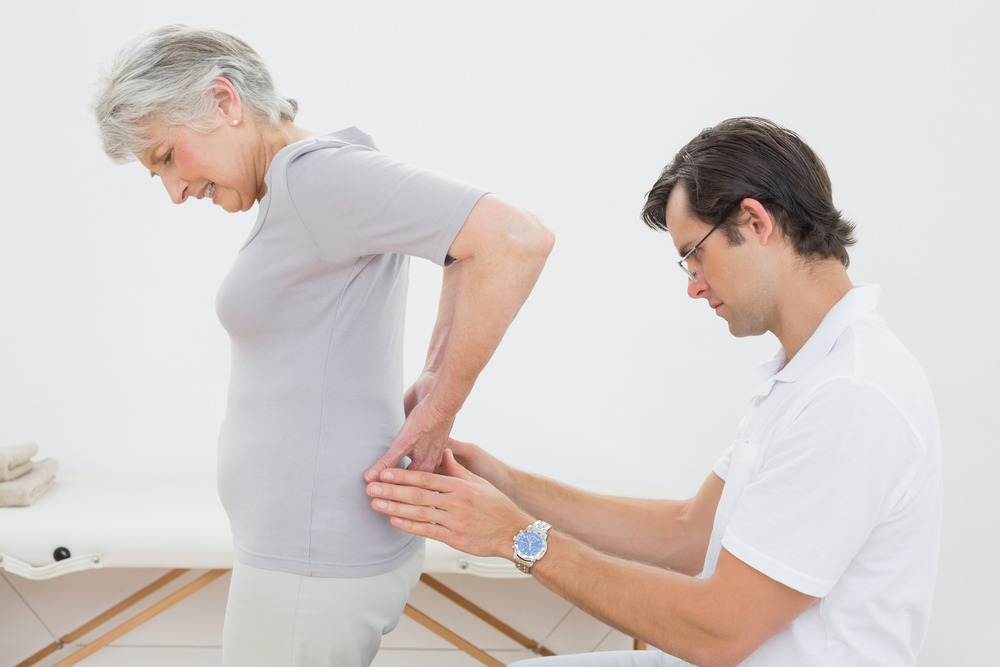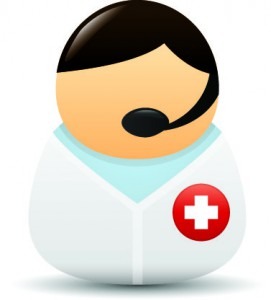Healthcare with Confidence
Radiculopathy is a pinched nerve in the spine. This occurs when the nerve surrounding bone, cartilage, muscle and tendon wear or injured. As a result of injury these tissues change their position in the body, thus providing additional pressure on the nerve roots of the spinal cord.
When the nerve roots are compressed, they are inflamed. This leads to numbness, weakness and pain. With timely treatment by our experts this process can be reversed and cured tissue and nerve damage.
Types of radiculopathy depend on compressed nerve location:
![]() Cervical radiculopathy is pressure on the nerve roots of the neck. This can lead to a painful burning or tingling sensation in the neck, shoulders and arms.
Cervical radiculopathy is pressure on the nerve roots of the neck. This can lead to a painful burning or tingling sensation in the neck, shoulders and arms.
![]() Thoracic radiculopathy occurs when there is trapped nerves in the middle of the spine. It causes pain in the chest and torso. This is one of the rare species radiculopathy.
Thoracic radiculopathy occurs when there is trapped nerves in the middle of the spine. It causes pain in the chest and torso. This is one of the rare species radiculopathy.
![]() Lumbar radiculopathy is pressure on the nerve roots in the lower back. This can lead to sciatica or shooting pain in the legs. In severe cases it is also possible urinary incontinence, sexual dysfunction or severe paralysis.
Lumbar radiculopathy is pressure on the nerve roots in the lower back. This can lead to sciatica or shooting pain in the legs. In severe cases it is also possible urinary incontinence, sexual dysfunction or severe paralysis.
Causes of radiculopathy
Sometimes radiculopathy is a consequence of a herniated spinal disc. This occurs when the outer rim of the disc is weakened or broken (sequestration). As a result, the nucleus pulposus disc comes out and puts pressure on nearby spinal nerve.
Cause of radiculopathy may also be bone spurs. This occurs through the formation of additional bone forms around the disk, as a result of weakening or destruction. These spurs make spine rigid and narrow space, which houses the nerves, causing them to shrink.
The pressure on the nerve by a slipped disc of the surrounding tissue, muscle or tendon may cause inflammation. This disrupts nerve function. Such compression may occur spontaneously, but can also be the result of trauma or other factors that affect the spine. These include trauma, obesity and osteoarthritis. Age is another factor. Compression can also cause bad posture or stress from repetitive activities.
Risk Factors
Many of the changes in disk and vertebrae occur with age. Radiculopathy usually affects people over age of 30.
Diseases such as rheumatoid arthritis, diabetes and obesity may increase the risk of radiculopathy. Bone spurs can sometimes occur due to injury or osteoarthritis. The condition can also be caused by repetitive hand, wrist and arm movements. Higher risk are usually pregnant women. Radiculopathy may also be hereditary.
Symptoms of radiculopathy
Radiculopathy symptoms can range from mild to severe.Type and location of pain depends on the location of the clamping of the nerve root. Cervical radiculopathy typically affects the lower part of the neck. Lumbar radiculopathy causes more discomfort in the lower leg than in the back.
Symptoms of radiculopathy include:
![]() Sudden back pain, irradiruyuschie up
Sudden back pain, irradiruyuschie up
![]() Sharp pain that worsens from intra-abdominal pressure in the sitting position or when coughing
Sharp pain that worsens from intra-abdominal pressure in the sitting position or when coughing
![]() Numbness foot skin
Numbness foot skin
![]() Weakness and tingling in the neck and shoulder
Weakness and tingling in the neck and shoulder
![]() Weakness and tingling in the back and leg
Weakness and tingling in the back and leg
![]() Changes in sensation
Changes in sensation
![]() Loss of reflexes
Loss of reflexes
![]() Sore shoulder or arm
Sore shoulder or arm
![]() Pain that worsens with movement of the neck or head
Pain that worsens with movement of the neck or head
![]() Increased sensitivity
Increased sensitivity
Diagnosis of radiculopathy
After the initial physical examination, bone deformities or narrowing mono discs detected by X-ray.
Magnetic resonance imaging (MRI) studies, soft tissue, spinal cord and nerve roots. Computed tomography (CT) helps assess the finer details of the bones, including bone spurs.
Electromyogram (EMG) measures the electrical impulses of muscles at rest and during contractions. It helps to find evidence of damage. Nerve conduction study (NCS) measures the ability of nerves to transmit electrical signals.
Radiculopathy management
Some drugs may be effective in the treatment of pain and inflammation such as analgesics, nonsteroidal anti-inflammatory drugs (NSAIDs), muscle relaxants,
oral corticosteroids, prescription opioids in severe pain, spinal corticosteroid injections into the damaged area.
Surgery
Physicians may recommend surgery in cases where radiculopathy not improved over a certain period of time. It is typically after six to 12 weeks conservative treatment. The operation can also be considered where several damaged nerves or nerve function which decreases despite treatment.
The operation is performed in order to release pressure from the affected nerve. This procedure is called a discectomy. It involves the removal of bone spurs or part of a herniated disc. During this procedure part of the vertebrae may be removed or connected by hinges dynamic (dynamic fixation), which allows to preserve the function and flexibility of the spine.
Physical therapy helps patients strengthen, stretch and protect the affected area.
Prevention radiculopathy
Although some factors of radiculopathy can not be avoided, there are several ways to reduce the risk. Maintaining good posture and a healthy weight can reduce your chances of developing radiculopathy. To prevent complications you need to use safe practices when lifting heavy objects, while performing repetitive tasks it is necessary to take frequent breaks.
Physical activity may also help. This includes a regular exercise for strength and flexibility of the spine.
If you are diagnosed with any type of radiculopathy, please contact our specialists. We will inform you in short about the opinion of the leading Israeli neurosurgeon (neurologist).
Leading Israeli Spine Surgeons – Second Opinion



